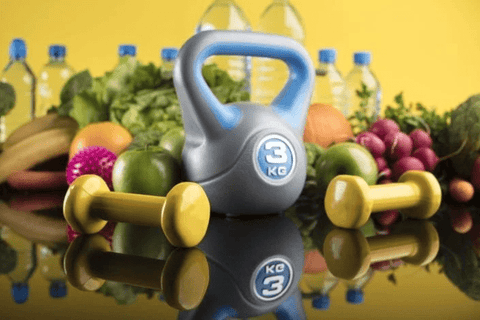
Your heart is the center of your cardiovascular system. It is involved in many of the daily functions that bring your body to life. So having a healthy heart is vital to your overall health. Two of the simplest yet most important ways to help your heart health are through diet and exercise.
Path to improved health
Improving your heart health is not difficult when you know how to eat and how to exercise. Follow these tips to get the most out of your diet and exercise plan.
Diet
The foods you eat can affect your weight, your hormones, and the health of your organs, including your heart. Eating a healthy diet can help reduce the risk of heart disease and stroke.
- Choose healthy fats. Despite what you may have heard, some fats are actually good for you. When you use fats for cooking, choose monounsaturated fats, such as olive oil or canola oil. Avocados are also a good source of monounsaturated fat. Polyunsaturated fats and omega-3 fatty acids are also healthy choices. Polyunsaturated fats are found in nuts and seeds. Omega-3 fats are found in fish, such as tuna and salmon. In general, you should try to avoid trans fats. Trans fats are usually found in processed foods and snacks such as crackers or snack cakes. To see whether a food contains trans fats, look for the words “partially hydrogenated” in the ingredient label.
- Go whole-grain. Whole-grain breads or pastas are higher in fiber and complex carbohydrates. Choose them instead of white breads or regular pastas for sandwiches and meals.
- Eat plenty of fruits and vegetables. They contain fiber, vitamins, and minerals that are good for your body. They also add flavor and variety to your diet.
- Prepare meat healthfully. Baking, broiling, and roasting are the healthiest ways to prepare meat and poultry. Trim any outside fat or skin before cooking. Lean cuts can be pan-broiled or stir-fried.
- Don’t forget beans. Dry beans, peas, and lentils offer protein and fiber. Once in a while, try substituting beans for meat in a favorite recipe, such as lasagna or chili.
- Choose low-fat dairy. Go for fat-free or low-fat versions of milk, yogurt, and cheese products.
- Pack in protein. Eat protein–rich foods, including fish, lean meats, skinless poultry, eggs, nuts and seeds, and beans.
- Try a diet. The DASH (Dietary Approaches to Stop Hypertension) eating plan is a heart-healthy approach that lowers blood pressure and bad cholesterol in your blood. Or try the Mediterranean Diet for another healthy approach to eating.
What should I NOT eat?
A heart-healthy diet limits some nutrients. These include:
Sodium. Flavor foods with spices or no-salt seasonings instead of salt. Watch out for prepackaged foods, sauces, canned foods, and processed foods. They can all contain a high amount of sodium.
Saturated and trans fats. Saturated fats are found in fatty meats, poultry skin, whole-milk dairy, butter, lard, and coconut and palm oils. Trans fats are found in some desserts, microwave popcorn, frozen pizza, stick margarines, and coffee creamers. Look for the words partially hydrogenated oil on the food label.
Added sugar. Sweetened drinks, snacks, and sweet treats are the main source of added sugars in the United States. These include sodas, sweetened coffee and tea, energy drinks, cakes, pies, ice cream, candy, syrups, and jellies. Limit these types of foods and drinks.
Alcohol. Limit your intake of alcohol. Men should have no more than 2 drinks a day. Women should have no more than 1 drink per day. Too much alcohol can raise your blood pressure and cause you to gain weight. It can also contribute to or worsen heart failure in some people.


